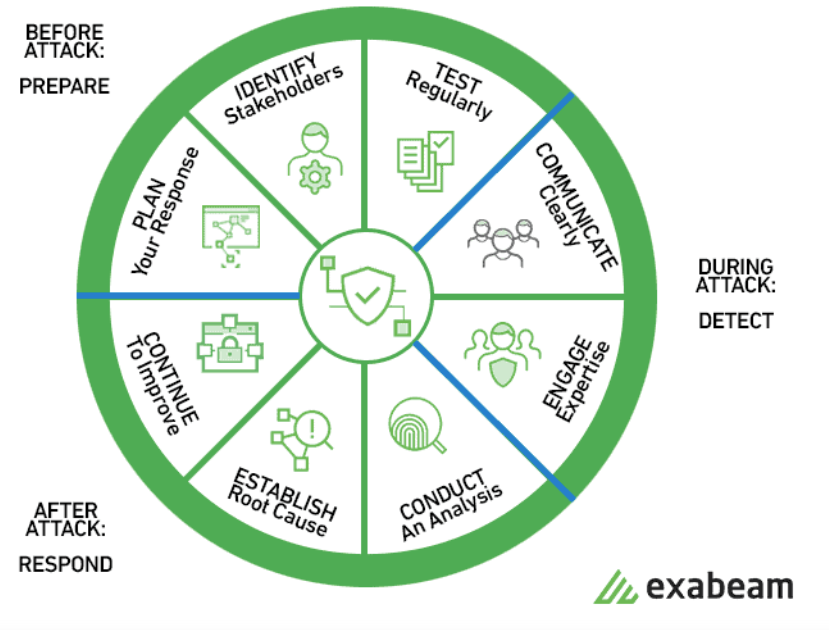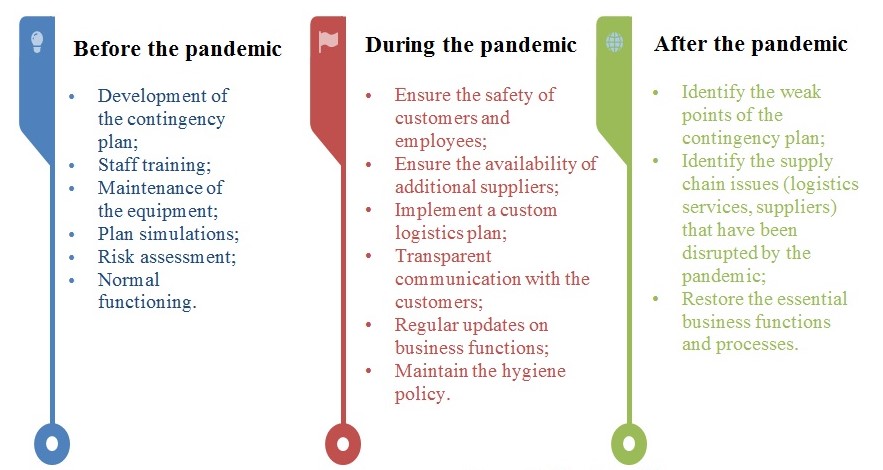In most industries, business organizations continually face potential threats and risks that might severely obstruct the primary functions and the overall process of the companies. To minimize the chances and consequences of disruptions, it is essential to develop a comprehensive contingency plan that would account for various types of threats. Depending on the industry, the potential emergencies might include disasters, economic fluctuations, social and political trends, and other key risks. The contemporary business situation is further complicated by the pandemic restrictions in a large number of countries that might also pose a threat to the financial well-being of organizations. The current paper attempts to critically analyze the cosmetics industry and propose a detailed contingency plan for BRIGHT, an e-commerce organization specializing in personal care.
Overview of the Organization
The chosen organization is BRIGHT, a client-centered cosmetic brand based in Seoul, South Korea. The primary product line of the organization is skincare and personal care commodities. BRIGHT is an e-commerce company operating primarily in South and Southeast Asia, with most customers ordering from India, South Korea, Thailand, and Indonesia. To meet the customers’ needs, the website is localized in five languages, including English, Hindi, Korean, Thai, and Indonesian, respectively. Currently, the company’s primary business application is B2C e-commerce (business-to-customer); therefore, BRIGHT emphasizes customer service and acquisition as its primary mission and puts considerable effort into the marketing of the product. The team consists of eleven consistent members with occasional contractors, including package and logistics services. The full-time employees are accountable primarily for merchandising, content, marketing, and front-end/back-end development. The current dimensions and strategies of the company do not require additional labor power.
Industry
The cosmetic business is a rapidly developing industry of health and beauty products offering a wide range of commodities from shampoos to skincare. The industry’s growth rate is estimated at 6.4% per year (Halla et al., 2018). Nevertheless, cosmetics are also associated with a wide range of risks, including biological and chemical contamination due to violation of safety standards (Halla et al., 2018). The regulations in the industry are provided by various official organizations depending on the country; for instance, Food and Drug Administration (FDA) governs the safety of the cosmetic business in America (Halla et al., 2018). Nevertheless, the majority of cosmetic goods are chemical compounds produced from synthetic sources and might harm customers if not appropriately managed. Therefore, BRIGHT ensures the safety of its products by contacting the verified suppliers and avoiding inorganic sources.
Product Line
BRIGHT focuses on skincare and beauty products promoting organic products and sustainable development. One particular type of cosmetic goods that BRIGHT is known for is the innovative version of skin-lightening products. In general, skin-lightening or skin-whitening cosmetics are highly prominent among males and females in South Asia; nevertheless, they have been recently criticized for promoting colorism (Adbi et al., 2021). Furthermore, the recent trends in the industry support social and environmental sustainability and have led to a number of companies rebranding and shifting away from skin-lightening products (Adbi et al., 2021). BRIGHT agrees with these policies and promotes cosmetics with lightening effects that do not change the color but only level the hues and pigmentation spots of the skin. Accompanied by the sustainable marketing strategies, BRIGHT plans to make a change concerning the skin-lightening products.
Location
As mentioned briefly before, the organization is positioned in Seoul. The company is located in South Korea due to the increased prevalence of the cosmetic industry in South Asia, with a revenue of approximately 50% of the global market (Roberts, 2021). The value of the beauty and personal markets is predicted to reach $784.6 billion by 2025, implying the rapid growth of the industry and making cosmetics a highly nourishing area for business (Roberts, 2021). Furthermore, South Korea provides excellent opportunities to online businesses and is widely known for its cosmetic brands. Moreover, South Korea is located in relative proximity to the other extensive cosmetic markets, namely, Indian and Thai.
Strategies
BRIGHT is an e-commerce organization that sells cosmetics only in online form. There are no retail shops or separate departments of BRIGHT’s products in supermarkets, drugstores, beauty salons, or other cosmetics distributors. Ultimately, BRIGHT focuses solely on e-commerce since the potential growth in this area highly exceeds the traditional methods. The research demonstrates that online sales increase by approximately 4-6% per year, while offline sales decline by about 1% each year (Roberts, 2021). Furthermore, the value of independent e-commerce cosmetic brands increases by approximately 16-20% per year (Roberts, 2021). Lastly, traditional retail is widely populated by top manufacturers, such as L’Oreal and Dove, making it almost impossible for new companies to get into the market. Despite the high levels of competition, independent brands can strive in online retail due to the exclusivity of the content and intelligent marketing (Roberts, 2021). Sustainable strategies, e-commerce, and the denial of traditional skin-lightening products are among the primary reasons for the company’s success.
Threats
Due to the rapid growth of the industry and intelligent marketing, BRIGHT has established a stable position in the market with the continual growth of revenue. Nevertheless, the beauty industry is associated with a large number of risks and threats that might potentially disrupt the development of the companies. The inclusive contingencies of the sector include political, legal, social, technological, and environmental factors. Furthermore, supply chain disruptions may occur due to a number of external factors, such as natural disasters and cyber-attacks. The chart below demonstrates the primary threats of the business in the cosmetic industry:

Demand for Contingency Planning Efforts
At the present time, BRIGHT is lacking contingency planning efforts and requires additional assistance in this area. Having acknowledged the primary strengths, weaknesses, strategies, and potential threats, it is possible to develop a comprehensive contingency plan. The critical risks for the organization are the disruption of the global and local supply chains, economic fluctuations, social trends for a particular line of products, potential chemical risks of the commodities, and natural disasters. Before establishing a contingency plan, it is essential to evaluate the risk management plan and assess the potential impact of the threats. The chart below demonstrates the probability and impact of the aforementioned risks.

Risk Assessment
The most impactful threat to the success of the business is the risk of global pandemics that might severely disrupt the global supply chains. Due to the increasing globalization and digitalization of all industries, supply chains are highly vulnerable to external factors that affect the global networks of suppliers (Hobbs, 2020). For instance, approximately 75% of businesses in America have suffered from supply chain disruptions due to the COVID-19 restrictions (Hobbs, 2020). Since a large number of companies operate internationally, the pandemic has had a vast impact on businesses in all parts of the world. Thus, while global pandemics do not occur frequently, they are the most impactful threats to businesses in contemporary realities.
The other two highly prominent factors that might stagnate the growth of the company are social trends and predicaments with manufacturers and suppliers. As mentioned in the ‘Product Line’ section, BRIGHT has substituted the traditional skin-lightening products with more sustainable commodities that do not promote colorism and racial stereotypes. The primary reason for the approach is the ongoing trend toward sustainability and organic products that support social equality. Furthermore, skin-lightening products may cause severe health complications if the regulations are not followed (Michalek et al., 2019). As a result, BRIGHT has established a loyal customer base (primarily in India and South Korea) that considers the quality of the products. Nevertheless, if the social trend shifts back to skin-lightening cosmetics, BRIGHT might lose the majority of its clients. At the same time, this transformation is unlikely to happen since sustainable development is an ongoing global trend that is predicted to only strengthen in the future. Eco-friendliness is among the most significant factors in the choice of cosmetics for young people (Roberts, 2021). Therefore, social trends are unlikely to change in the near future.
Miscommunication and other predicaments with manufacturers might also severely delay the services of the company. It is vital to propose a backup plan for every step of the primary processes, such as manufacturing, logistics, and delivery. At the same time, it is essential to develop diverse responses for various types of supply chain disruptions. It is also advisable to establish different levels of contingency depending on the severity of the emergency. Ultimately, the comprehensive contingency plan should take all the potential risks and threats into account and propose diverse responses for them.
Subtypes of Contingency Planning
Frequently, business organizations need to account for additional subordinate functions in their contingency plans, including business impact analysis (BIA), business continuity planning (BCP), Business Continuity Planning (DRP&BCP), and incident response plan (ICP). Each of the categories includes necessary components and guidelines for the contingency plan to be effective. Therefore, it is essential to specifically discuss the subordinate functions before proposing the contingency planning policies and procedures.
Business Impact Analysis
Business impact analysis is a proactive methodology that allows predicting the disruptions of supply chains and business operations. Furthermore, BIA identifies the potential impact of the threats and enables the company to minimize the financial damage (Hyun, 2020). A comprehensive BIA also indicates the prioritized operations and areas for recovery, such as communication with customers or necessary repairs (Hyun, 2020). While BIA is a part of contingency planning, its primary purpose is to assess the critical processes of the company and propose a response plan (Hyun, 2020). Therefore, BIA does not develop coherent strategies for each potential threat specifically but addresses the consequences of the risks (Hyun, 2020). For instance, if BRIGHT is to suffer from supply chain disruption, BIA ensures that resource requirements are met and prioritizes certain processes while not proposing specific solutions to specific problems.
Business Continuity Planning
Business continuity planning is another subcategory of a contingency plan that covers the wide array of issues in the emergency response. Its primary purpose is to propose a set of actions during and after the emergency (IBM Services, 2020). It is a broad category that covers the primary stages of the contingency plan and a disaster recovery plan (IBM Services, 2020). BCP generally proposes strategies to handle emergencies and analyzes the preventive measures. A comprehensive BCP allows minimizing the damage from the disruption and continuing the business operations as fast as possible.
Incident Response Plan
IRP generally concerns the response to cyber threats, such as data breaches, malware, DDoS attacks, and other digital risks. IRPs are beneficial for e-commerce organizations since most of their processes are highly vulnerable to online threats. A comprehensive IRP improves data protection, enhances the reputation of the company, and reduces the costs due to the potential losses from breaches (Casetto, 2018). Exabeam proposes the following chart of primary components of IRP:

Some of the mentioned regulations apply to all types and subcategories of contingency plans, while some are specific to digital threats.
Contingency Plan
Having established the primary components of comprehensive emergency response, it is possible to formally structure and highlight the primary stages of the contingency plan.

Table 1. The contingency planning steps within BRIGHT
The Incident Scenario
To further evaluate the quality of the existing contingency plan, it is necessary to simulate the incident scenario. The hypothetical emergency is another global pandemic that has disrupted the major supply chains in South Asia. Having learned numerous lessons from the COVID-19, SARS, H1N1, and Ebola pandemics, it is essential to integrate innovative technologies and techniques into the current contingency plan. Unlike most economic shocks extended for a long period of time, pandemics are commonly associated with safety risks and potential health complications of the staff (Black & Glaser-Segura, 2020). Furthermore, the experts have found that legal, political, social, and economic trends might significantly increase the chance of supply chain disruption (Black & Glaser-Segura, 2020). However, the current contingency plan is developed according to the risk assessment of both industry-specific and external threats (figure. 1). Therefore, the plan is sufficiently equipped to handle any type of potential emergency. The timeline below demonstrates the consequent steps of contingency planning during the pandemic outbreak.
Timeline of the Contingency Plan

Ethical Concerns
Emergencies and pandemics, in particular, are highly stressful environments and might cause significant damage to the mental health of the employees. Furthermore, the consequent recovery efforts are frequently accompanied by overtime hours and additional physical strain. While it is essential to restore the operating system as fast as possible, a comprehensive contingency plan must take ethical concerns into account to maintain the health of the employees. Therefore, a thorough schedule of recovery efforts is necessary to minimize the overtime hours of the workers and ensure their safety.
Furthermore, there are company-specific ethical concerns that need to be addressed. Since BRIGHT is a customer-oriented cosmetic brand, it is vital to minimize the downtime of the supply chain and restore the shipping process as fast as possible. Extra waiting time for customers goes against the ethical policies of the company; therefore, the CP leader and communication department are exposed to additional pressure during supply chain disruption. Ultimately, cosmetic e-commerce is a highly competitive environment, and unsatisfied customers might severely damage the business.
Conclusion
The current paper has thoroughly described the organizational structure and business methodology of BRIGHT, a cosmetic company located in Seoul, South Korea. Furthermore, the work has examined the potential risks and threats that are prevalent in the industry as a whole and contingencies that are specific to BRIGHT. Based on these data, a contingency plan is proposed with a thorough classification of the subcategories, such as BIA, BCP, and IRP. Consequently, seven stages of contingency planning are identified and thoroughly examined. Lastly, the paper illustrates the effectiveness of the contingency plan on the example of a hypothetical global pandemic.
References
Adbi, A, Chatterjee, C., Cortland, C., Kinias, Z., & Singh, J. (2021). Women’s disempowerment and preferences for skin lightening products that reinforce colorism: Experimental evidence from India. Psychology of Women Quarterly, 45(1). Web.
Black, S., & Glaser-Segura, D. (2020). Supply chain resilience in a pandemic: The need for revised contingency planning. Management Dynamics in the Knowledge Economy, 8(4), 325-343. Web.
Cassetto, O. (2018). How to build an incident response plan around the SANS incident response process, examples to get you started, and a peak at incident response automation. Web.
Halla, N., Fernandes, I., Heleno, S., Costa, P., Boucherit-Otmani, Z., Boucherit, K., Rodrigues, A., Ferreira, I., & Barreiro, M. (2018). Cosmetics preservation: A review on present strategies. Molecules, 23(7), 1571. Web.
Hyun, J. (2020). Business impact analysis – Guide to uncovering risks in an organization. Web.
IBM Services. (2020). Adapt and respond to risks with a business continuity plan (BCP). Web.
Michalek, I. M., Benn, E. K. T., dos Santos, F. L. C., Gordon, S., Wen, C., & Liu, B. (2019). A systematic review of global legal regulations on the permissible level of heavy metals in cosmetics with particular emphasis on skin lightening products. Environmental Research, 170, 187–193. Web.
Roberts, R. 2021 beauty industry trends & cosmetics marketing: statistics and strategies for your own ecommerce growth. Web.